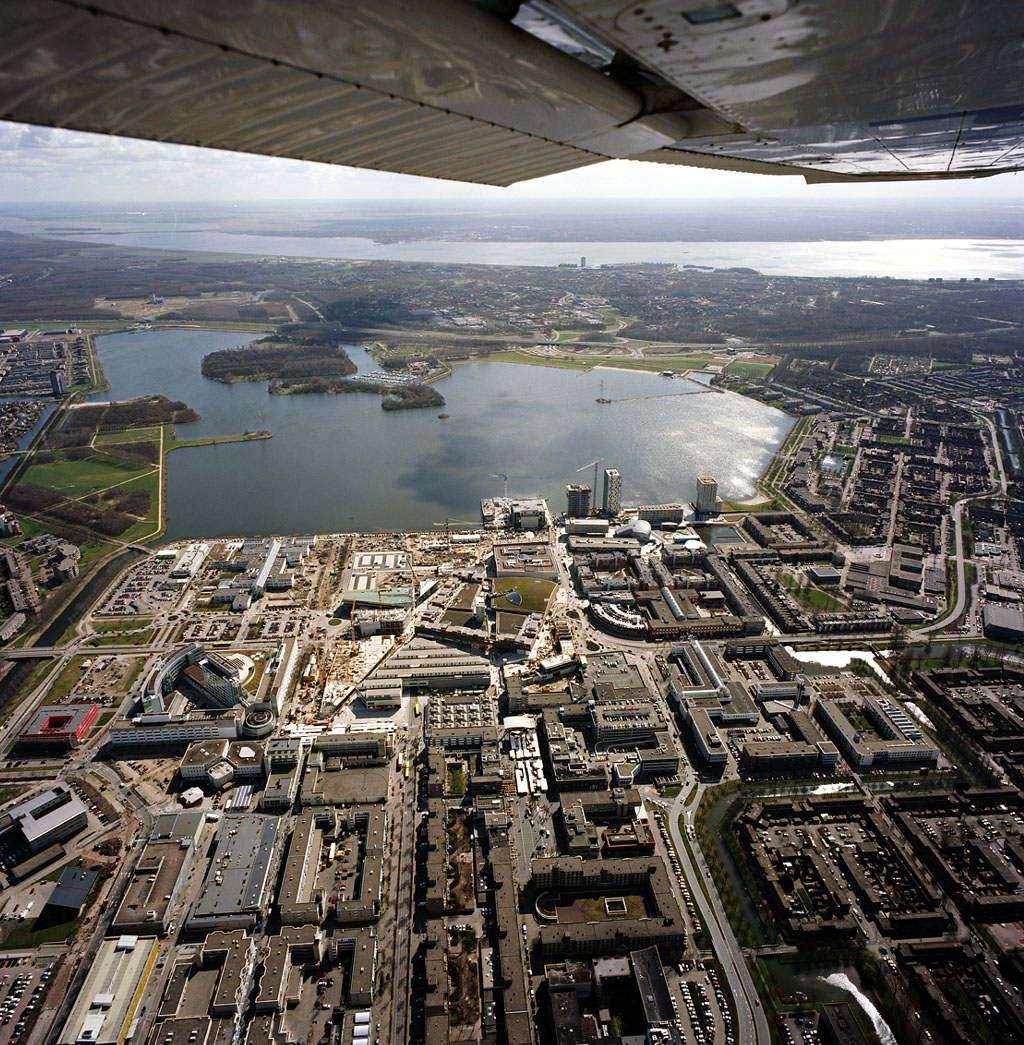22-08-07 // DUMPED IN ALMERE – INTERVIEW WITH FLORIS ALKEMADE

Aerial view of Almere, ©OMA
Beatriz Ramo and Bernd Upmeyer spoke on behalf of MONU with Floris Alkemade. Floris Alkemade is one of the partners of Rotterdam based OMA (Office for Metropolitan Architecture). He joined OMA in 1989 and has worked there as a project director for architecture and urban planning since 1996. As project architect and project leader, he worked in the early nineties on the Euralille master plan, a 70-hectare business, and civic centre in northern France hosting the European hub for high-speed trains. Since 1994, he has been leading the master-plan project for the City Center of Almere, which is currently under construction. The land where Almere sits today was part of the North Sea 50 years ago. At the end of the fifties, the construction of the polder began. Today Almere can be categorized as a 2nd rate city with 180.000 inhabitants. The city is located 35 km east of Amsterdam. The first house was built in 1976, and just 8 years later, Almere was designated an official municipality. It is expected that the population of Almere reaches 210.000 inhabitants by 2015, making it the 5th largest city in Netherlands.
Beatriz Ramo: Was Almere ever planned to be a 2nd rate city?
Floris Alkemade: Almere, strangely enough, was never intended to be a city. Almere was planned at the time, when the Bijlmermeer was constructed, that hardcore CIAM-kind of architecture. People started to realize, what the effects of that kind of architecture were and they decided to never do it again. Then they started to plan Almere and they decided that what ever they would do, it should not become a city. They planned Almere as five independent villages (Almere Haven, Almere Hout, etc), separated by vast amounts of green spaces. They were planned as very small-scale areas, where the car traffic would always located outside, in a ring road with only one road connection finishing in the area as a dead end. The intriguing thing was, even though Almere was never planned as an entire city, somehow its proximity to Amsterdam lead to the effect, that it started to grow and grow, which first of all had to do with the availability of the area.
Bernd Upmeyer: In that sense, at the beginning Almere was purely a housing area? Like a dormitory city?
Floris Alkemade: Exactly. At the beginning, it was a real satellite of Amsterdam, also politically. So the people in Amsterdam told Almere what to do. Amsterdam also financed projects there. However, at a certain moment it started to become clear, that Almere was growing more rapidly than anybody had ever expected. At a certain point, they decided that they no longer wanted to be a part of Amsterdam but wanted to become independent. It is almost like when children turn 16 or 17 and say “well, forget about it, I am going to live my own life”. Almere thought, “We don’t need your money. We are big, we will become even bigger and we can determine our own identity”…
…the complete interview was published in MONU #7 on the topic of 2nd Rate Urbanism on September 10, 2007.
Title: Dumped in Almere
Project: Interview with Floris Alkemade
Date: August 2007
Type: Commissioned interview
Topic: 2nd Rate Urbanism
Organizer: MONU
Status: Published
Publications: MONU #7, P.74-86
Interviewer: Beatriz Ramo, Bernd Upmeyer